

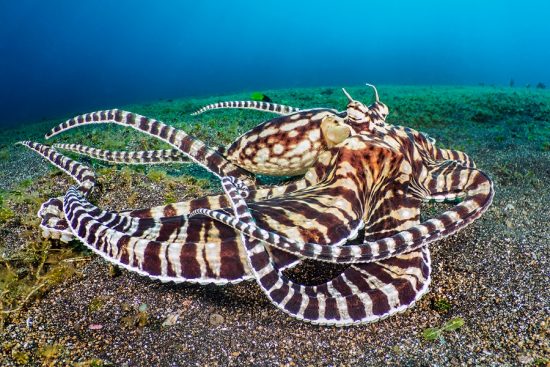

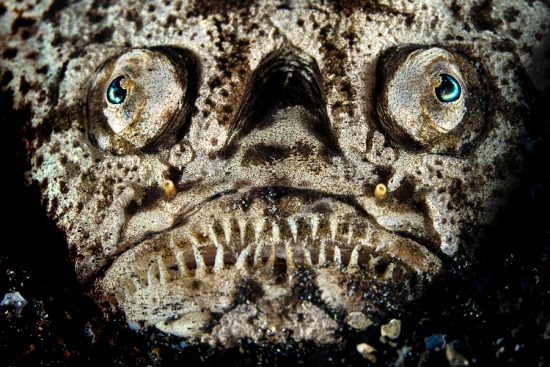
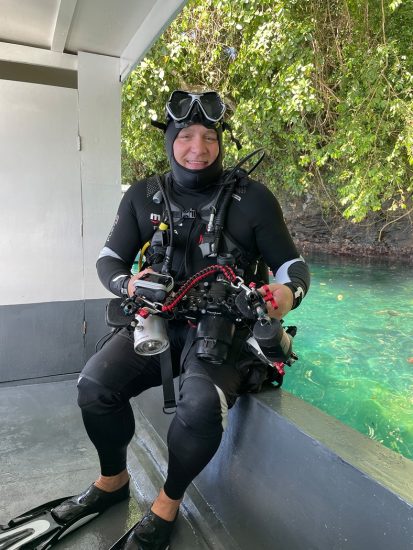
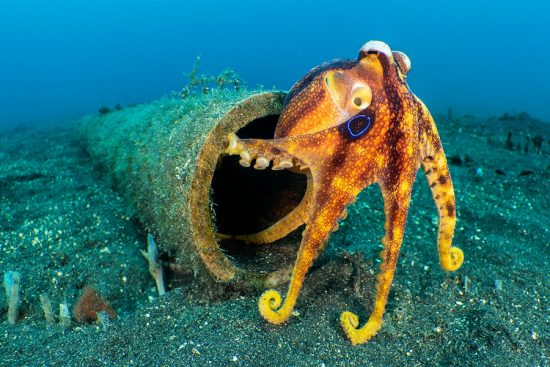
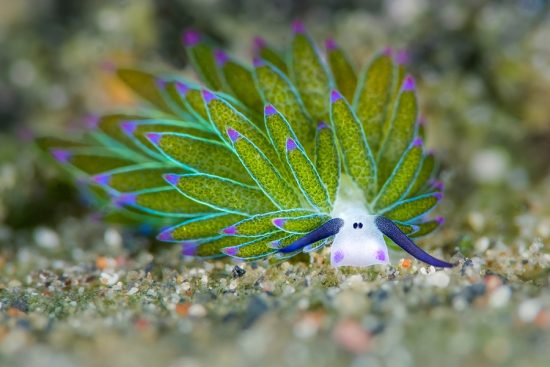
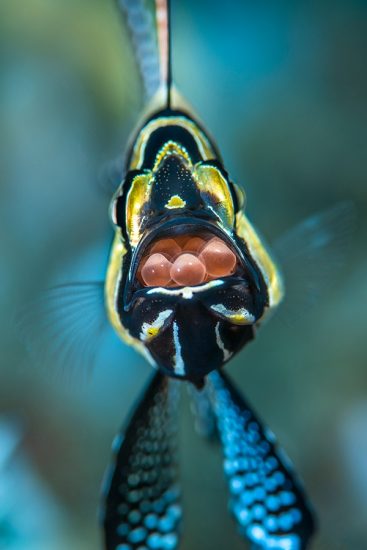
Lembeh, in Indonesia, is one of the world’s most celebrated dive destinations. This 10 mile long sliver of sea is less than a mile wide, constrained between the forested volcanic landscape of Lembeh Island and North Sulawesi, yet is home to 60+ dive sites and about 20 specialist dive operations. Despite its fame and popularity, it is important to stress that Lembeh is not for everyone. Lembeh may be bathed in equatorial sunshine, but this is not a classic beach holiday and tropical reef destination. This is the world’s most famous spot for muck diving, where beautiful reefscapes and clear water are not the priority – people come to Lembeh for the amazing marine critters.
So while Lembeh isn’t for everyone, for those who love marine life or carry an underwater camera this destination is a wonderland. I regularly meet guests here who have visited more than a dozen times and now choose to base their dive holidays nowhere else, and I am with them. It is one of my favourite places to dive on the planet.
The chief attraction is photogenically bizarre marine life. If you have ever thumbed through page after page of a marine life ID book filled with bizarre fish and peculiar beasts that you have never seen underwater, Lembeh is the place to change that. A-list animals such as flamboyant cuttlefish, hairy frogfish, pygmy seahorses and mimic octopuses are seen daily. It is a dream for anyone who enjoys taking pictures because the critters are so abundant that you always have something to shoot, and most of them sit still and pose, so certain that their extravagant adaptations will keep them safe. Meaning whatever camera you have, you will go home with pictures to be proud of. I snapped off more than 10,000 photos on my latest trip.
Muck diving wasn’t invented here, but Lembeh was the destination that made it mainstream. Muck divers favour mud, sand and rubble habitats over clear water and coral reefs, with the goal of finding amazing creatures. The style of diving is highly addictive because it pushes our primitive hunter buttons: the anticipation of what we might see, the excitement of searching and the thrill of discovery. All dives are in very small groups with an expert local guide, typically descending down a featureless slope and zig-zagging back up in a ”Lembeh-style”. The guides not only know these sites inside out, but they have an astounding ability to spot the ocean’s tiny treasures and revel in showing you as many as possible.
While muck diving is usually relaxing, it is a mistake to think it doesn’t challenge your diving skills, especially when you want to get close to inspect or photograph the miniature marvels. The most important skills are to always move slowly and dive as light as possible. Overweighted divers sink and then create a sandstorm when they try and correct it with their fins. I start light and keep dropping weight through the trip, being truly neutral without air in your BC in the way to be. I then dive with my camera slightly negative, so I am inclined forward, with my eyes close to the seabed, and my fins up and away from the sediment.
Taking of fins, this was another trip for my much loved Volo Race fins. I also used my Magellan BC, which is lightweight but very capable. I even used it for ocean drysuit diving in Canada. I also used my travel friendly Dual Adj 62X regulator. I usually wear a 5mm suit in Lembeh, for longer trips with so much time in the water, but this time with unusually warm water I used my Flexa 3/2 suit with my Ultra Skin hood. Both are so comfortable, and despite it being a 67 dive trip, kept me warm until the very last critter was spotted, but I would expect to be back in my Flexa 5/4 next time, with more normal water temperatures. Since I love Lembeh so much, I am very much looking forward to the next time.
I've even got a short video clip of me shooting with the unusual Nauticam EMWL lens on this trip.
 Alex
Alex 30th May 2023
30th May 2023